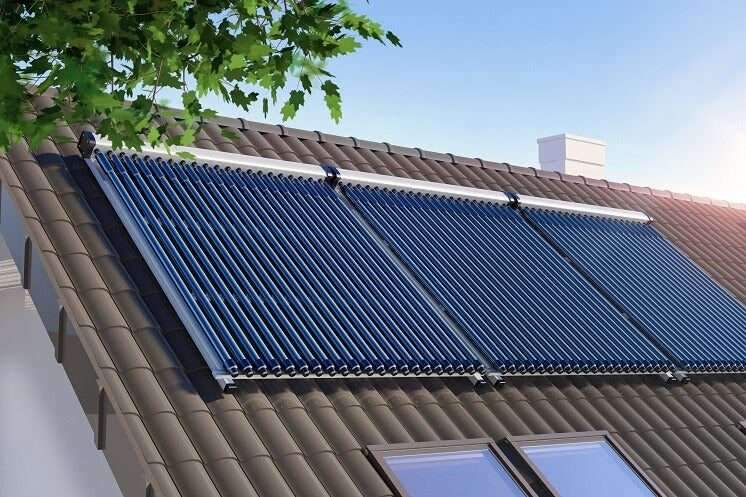Thermal Solar Energy
The term “solar thermal energy” (STE) refers to both a type of energy and a method for using solar energy to produce thermal energy for use in industry, as well as in the residential and commercial sectors.
Solar thermal technology can heat water, cool spaces, heat rooms, and generate power.
Heating with solar energy
Domestic water heating is the most typical application for solar thermal technology. There are hundreds of thousands of household hot water systems in operation worldwide.
Similar in operation to solar space heating is a solar water heater. A solar collector is on the south side of a roof in the northern hemisphere because this is where the sun shines the most. The sun heats water in a tank. Just like with a standard water heater, the hot water routes to a tap throughout a home.
Furthermore, solar heating systems can offer 60 to 70 percent of the residential hot water with temperatures up to 60 °C in low geographical latitudes (below 40 degrees). Evacuated tube collectors, glazed flat plate collectors, and unglazed plastic collectors, which are mostly used to heat swimming pools, are the most popular household solar water heater types.
Solar-powered heating
Heating the interior of a building is referred to as space heating. Solar energy is now used in many homes for space heating. Systems that use solar energy for space heating might be passive or active.
Moreover, the design of a passive solar home maximizes the amount of sunshine that can enter. It resembles an enormous solar collector. Additionally, sunlight enters the house through the windows and warms the walls and floor. Heat is confined inside, yet light can enter. The heating of a passive solar home does not rely on mechanical devices like pumps and blowers.
In contrast, an active solar home makes use of specialized machinery to capture sunlight. Special collectors that resemble glass-covered boxes may be used in a solar-powered home. To get the most of the winter sun, these collectors are fixed on the rooftop with their south-facing orientation. Furthermore, inside the boxes, dark-colored metal plates absorb sunlight and convert it to heat. (Black is the hue that best absorbs sunlight.) The heat from the collectors warms the air or water that is flowing through them.
Space Solar Cooling
By employing solar absorption coolers, the heat from a solar collector can also be used to cool a structure. A source of energy is solar heat. To produce cool air, a home air conditioner employs electricity as an energy source. Also, similar methods are employed by solar absorption coolers, along with some quite sophisticated chemistry techniques, to produce cool air using solar energy.
Thermal solar power plants
Solar thermal power plants heat a fluid to extremely high temperatures using the sun’s beams. The fluid is then moved through pipes where it heats the water, creating steam. A turbine transforms the steam into mechanical energy, which is then transformed into electricity by a separate generator connected to the turbine.
Therefore, the process for producing solar thermal energy is substantially the same as that for producing energy from fossil fuels, with the exception that solar heat is used to create steam rather than burning fossil fuels to create it. Concentrator systems are used in solar thermal technologies to reach the high temperatures required to heat the fluid.
Finally, we can divide solar thermal power systems into three categories:
- Spiral trough (the most common type of plant).
- Solar panel.
- Rooftop solar array.
Read more on Archup:
Want to Stay Relevant in Architecture? Become an Adaptive Reuse or Renovation Expert
جريئة كالنحاس: كيفية إعادة اللمعان إلى الديكورات الداخلية الحديثة | الأخبار | Architonic







